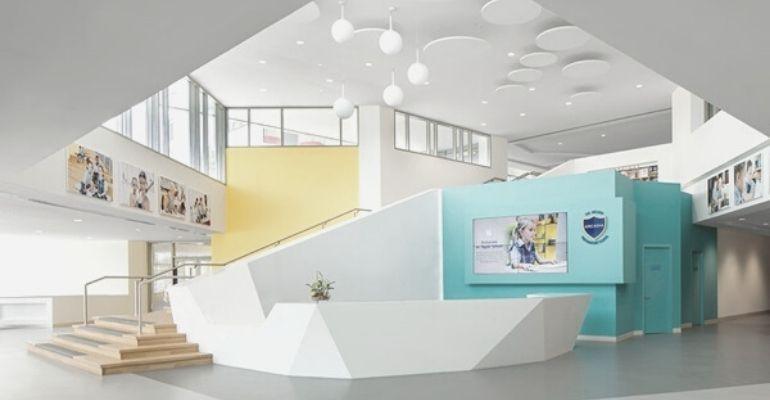A healthy school building leads to increased productivity, healthier staff and students, and better indoor air quality. This is according to Navin Mohan Valrani, CEO of Dubai’s Arcadia Education.
Valrani was speaking on sustainability in schools alongside Jason Burnside, Partner at Middle East-based architecture firm Godwin Austen Johnson, at the Cityscape GCC Summit 2021.
By building sustainable school buildings, operators can not only improve energy efficiency within the buildings, but also benefit from an operational point of view, Valrani noted.
Meanwhile, Burnside said that the sustainable design approach needs to be matched by a client who understands the costs related to these systems.
Associated costs should be treated as an investment, Valrani also said. Embracing sustainability in schools at the build stage has an impact not only on operational costs, but also on future valuations of the school building.
Valuations are “significantly higher” for school buildings that are sustainable, Valrani noted.
SUSTAINABILITY IN SCHOOLS: ARCADIA'S EXAMPLE
Arcadia schools are LEED silver rated for their primary school, and LEED gold rated for their secondary school.
Apart from a fresh air unit, Arcadia schools also have an efficient air conditioning solution built with Godwin Austen Johnson, Valrani said. The system is optimised for energy efficiency. Further, the schools are also built using sustainable materials sourced locally, he added.
“We’re in a region that has got a very clever vernacular architecture, and they’ve learnt to deal with these harsh environments over many centuries, and refine it in a very low-tech way,” Burnside said. “Through all the projects with Arcadia, understanding the site, maximising the return in terms of the built up footprint, but also looking at a very low tech solution to how the building is designed, can then be made better by looking at the systems that keep it efficient.”
Further, Burnside also said that there is increasing interest in sustainability in schools in the region. This, he said, was presumably because students and their parents have growing expectations for school buildings to be healthy.
Valrani echoed this thought, noting that “the international parent that’s relocating to Dubai” is now paying more attention to climate change, looking for schools that have sustainability values and commitments.
Retrofitting is also gaining interest and has benefits in terms of thermal capacities and running costs, Burnside said. The challenge, as Burnside notes, is that while demolition and reconstruction have a bigger carbon footprint, it may not always be possible to fully refurbish a building from a costs and feasibility standpoint.
Photo credit: www.nora.com/sweden/en/project-references/education/ae/dubai_arcadia-preparatory-school
KEEP UP WITH THE REAL ESTATE INDUSTRY
Subscribe to the Cityscape Intelligence newsletter here

